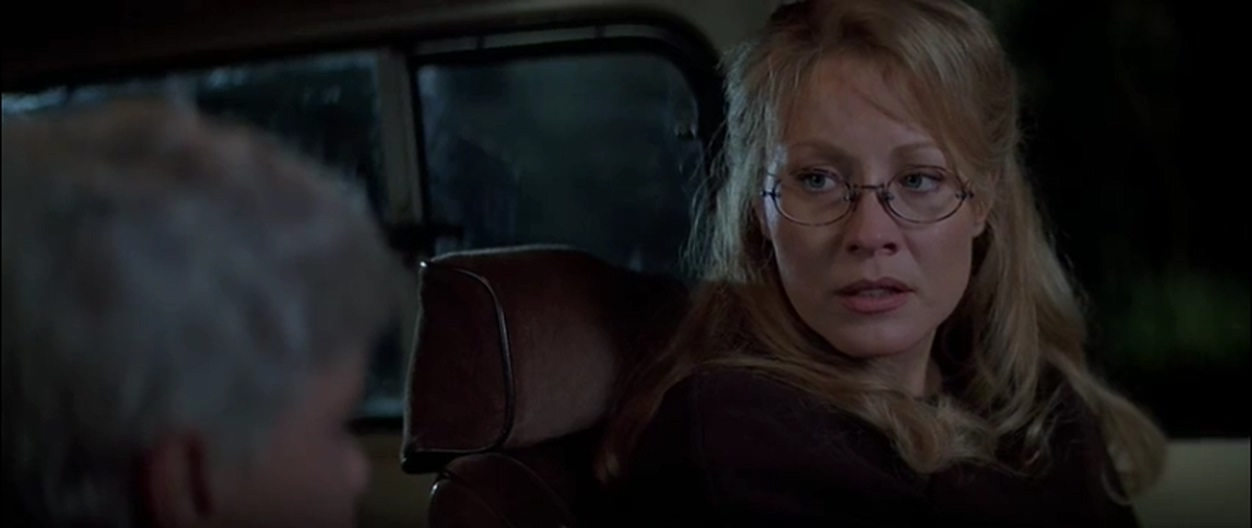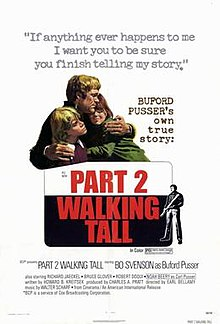Thursday, June 27, 2024
Village of the Damned (1995)
Sunday, June 23, 2024
Memoirs of An Invisible Man
Nick is a member of high society and his friend George Talbot (Michael McKean) introduces him to Alice Monroe (Daryl Hannah) at an exclusive country club they like to go to. I did enjoy the set up of this eventual romance. Nick and Alice start having a conversation about things they do and don't like and next thing they are in the bathroom making out. Alice and Nick agree to go out a different day as she says she has something else to do that night. It is a funny moment when they sneak away from George and his wife and Nick says he thought they were just finding a way to get out of the situation and Alice says she actually does have somewhere to be that night.
Friday, June 14, 2024
Walking Tall: Final Chapter
Aided by Jack Starrett's direction and a more experienced performance by Bo Svenson, the final film in this trilogy really walks tall. The drama of the first one is brought back in a meaningful way. The action scenes are better and have more stakes. The second film really only had one great dramatic scene. Svenson inhabited the role naturally but never really had to perform as much as he does here. The continuity is great. Even bringing back characters and storylines from the first film. The second film seemed to be searching for drama. This film generates an interesting conflict by having Buford have to run for reelection and losing. He not only has to cope with his losing, but not being able to do anything about the crime in town and not being able to get a new job. The last act of the film is eerily meta and allows audiences to say goodbye to this hero in a tragic yet satisfying way.
Synopsis: The film is about Sheriff Buford Pusser's (Bo Svenson) final years after retiring from the police in 1970, as he tries to make amends with his family and friends. The story includes Pusser continuing his work as sheriff, taking on a moonshine runner who abuses children, and busting up bars. The film also includes a meta element where Pusser gets to see a film version of his life, and the story ends with his suspicious death in a car accident in 1974, which the film links to his war on corruption.
The film starts with stock footage and recreation of the scene from the first film where Pauline was shot. Buford is now on a vengeance trail against John Witter (Logan Ramsey). However, Buford's two leads can do nothing to testify against Witter. Pinky Dobson, from the last film is paralyzed. His girlfriend, also a loose end from the last film has recanted her statement implicating Witter.
There were many emotionally satisfying moments in this film. There were also a lot of moments that seemed like natural reactions and conversations. Seeing Buford get angry at the Tennessee Bureau of Investigation after they say they have no evidence to implicate Witter felt natural. Svenson has a great acting moment early on where he breaks down at his wife's grave and cries and says he regrets ever running for Sheriff because he lost her. Later, when he loses reelection his father comes to tell him while he goes fishing with his kids. Another great natural feeling scene. Luan, another character brought back from the first film, is played by Maggie Blye here. Her and Buford's relationship was interesting in the first film as there seemed to be this will they or won't they aspect to it. You get the feeling that Buford would have taken an interest in her if he wasn't married. Him and Luan have dinner at one point in this movie and she confesses her love to Buford by saying that while she was a hooker she dreamed of a man who could help her out of that situation. Buford tells her that is too soon. Another quick transition happens and they laugh it off when she asks if she was the best informant he ever had. Those natural dramatic moments really add some pathos to this film.
The action and the consequences of it are better as well. Buford beats a man named QQ with his club after catching him beating his son. Buford, a father himself, takes offense to this and decides to treat him how he treats his son. QQ's lawyer later accuses Buford of police brutality and is a big reason why he loses his reelection bid. There are some great dramatic scenes in the second half. Buford seems more relatable when he talks to his friend Lloyd (Sandy McPeak) about how he can't get a job. Buford and his secretary Joan (Libby Boone) have a conversation about how Buford can't even bring himself to visit the courts. This is relatable to anyone who gets a new job and does not want to go back to the place they worked before, especially if they left on a bad note or just didn't like working there. Buford eventually gets into a fight with QQ and Udell again. They want to press charges on Buford and no one stands up for him except for Lloyd. This film is packed with poignant scenes like this where it shows the political aspect of how people can become too accustomed to the good things someone can do and forget so soon. The best action scene is when Buford finds out that Witter has opened a new prostitution and gambling joint called the THREE DEUCES. Buford visits and tries to give Luan money to leave her job there as a sex worker. Men working for Witter notice Buford and Luan talking and they torture Luan to death. Buford goes back to the joint and beats everyone up and burns it down. That is a better action and fight scene than anything in the second film.
SPOILER SECTION
The last act of this film is quite meta. Buford gets a call from a Hollywood producer who wants to make a movie about his life after watching the news. Buford agrees to the movie and in a sorrowing scene has to watch the sequence where his wife is killed in the theater. In true to life fashion Buford is even offered the part to play himself in the next movie. Buford's new car malfunctions and crashes after some of Witter's men see him at the meeting with the producers. His daughter Dwana later finds him and weeps over his body. Witter's boss puts out a hit on him as soon as she starts talking about more business opportunities in McNairy County now that Buford is dead.
Once again the continuity from the previous films is strong. Characters and actors come back to play the same roles. It was nice to see Bruce Glover again as the Deputy. Buford's father is played by Forrest Tucker, replacing Noah Beery. Dawn Lyn and Leif Garrett return as Buford's kids. While the last act of the film drags on a little bit, specifically the scene at the fair, that is just how 70s films sometimes went. I found this to be paced about the same as the second film but the drama and action was better. Svenson got to flex his acting muscles more, both literally and physically.
Rating: 7.5/10
Trivia: The real Buford Pusser was stated to play himself in WALKING TALL: PART 2, something this film emulates in a meta way. The last film was less violent because the company wanted the film to avoid an R-rating. This film is much more violent and you can see the difference.
Trailer: https://www.youtube.com/watch?v=UD9XJE3jlYU
Full Movie: https://www.youtube.com/watch?v=BlCDThCwYvk
Sunday, June 9, 2024
The Ward (2010)
Wednesday, June 5, 2024
Walking Tall Part 2 AKA Part 2: Walking Tall
The Big Doll House
A smorgasbord of exploitation and sexploitation, THE BIG DOLL HOUSE is a fun women-in-prison movie. While there is enough violence, tortur...

























